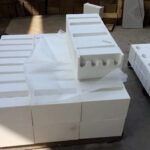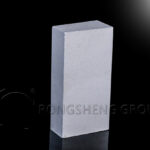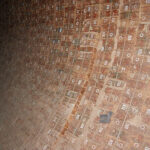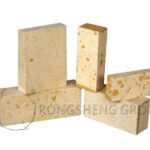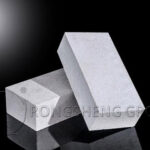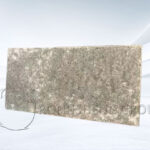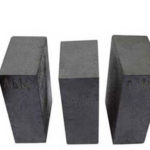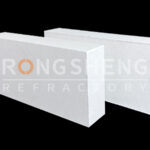Magnesium-carbon refractories are widely used as lining materials for smelting equipment such as converters, ladles, and electric arc furnaces due to their excellent resistance to slag erosion and thermal shock. However, under smelting conditions with high scrap ratios, magnesium-carbon refractories are subject to mechanical stresses generated by the introduction of scrap and thermal stresses caused by frequent fluctuations in service temperature, resulting in a significant reduction in their service life. Therefore, further improving the thermal shock resistance of magnesium-carbon refractories is crucial.
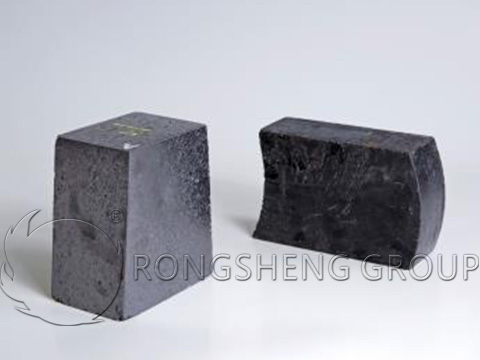
How to Improve the Thermal Shock Resistance of Magnesia-Carbon Refractories?
To improve the thermal shock resistance of magnesia-carbon refractories, the presence of a small amount of low-melting-point phase in ordinary sintered magnesia is exploited to partially replace the fused magnesia aggregate during the magnesia-carbon material preparation process. This allows for the formation of a localized liquid phase within the material matrix under service conditions (1000-1700°C), alleviating stress concentration within the material.
- After heat treatment at 1000°C, the ordinary magnesia aggregate within the magnesia-carbon material remains intact.
- When the temperature is raised to 1400°C, some impurities in the ordinary magnesia aggregate dissolve and diffuse into the surrounding matrix, causing the aggregate to disintegrate into a porous structure. Furthermore, the introduction of elemental silicon into the matrix results in the formation of numerous whisker-like and granular Mg2SiO4 phases, as well as the appearance of SiC whiskers.
- When heat-treated at 1600°C, the dissolution and diffusion of impurities intensify, resulting in the presence of granular Mg2SiO4 phases and SiC whiskers within the matrix.
The structural changes in these materials at high temperatures increase their strength, even their high-temperature flexural strength, and improve their thermal shock resistance. High-temperature splitting experiments show that the pore structure of sintered magnesia alleviates stress concentration. Furthermore, the formation of a liquid phase at 1400°C promotes sintering and whisker formation in the matrix, increasing the proportion of crack propagation along the aggregate-matrix interface, ultimately contributing to an increase in the material’s fracture energy and thermal shock resistance factor.
Effects of Impurities in Conventional Sintered Magnesia Aggregates on the Properties of Magnesia-Carbon Refractories
1) Samples containing conventional sintered magnesia exhibited higher thermal shock resistance. This is attributed to the porous structure of conventional sintered magnesia aggregate and the formation of a liquid phase at high temperatures, which reduces the overall thermal expansion of the sample. Carbon burial heat treatment at 1600°C further dissolves impurities, promoting sintering and the formation of Mg2SiO4 whiskers on the surface of the conventional magnesia, resulting in a higher strength variation index for the samples containing conventional sintered magnesia.
2) Samples containing conventional sintered magnesia exhibited higher fracture energy, characteristic length, and thermal shock resistance factor at 1000°C and 1400°C. This is due to the higher porosity of conventional sintered magnesia aggregate, which effectively alleviates stress concentration. At 1400°C, impurities in the conventional sintered magnesia aggregate dissolve and diffuse into the matrix, forming a liquid phase network. It is beneficial to absorb the stress at the crack tip, and the formation of the liquid phase is beneficial to promote the formation of whiskers, slowing down the expansion of the crack.
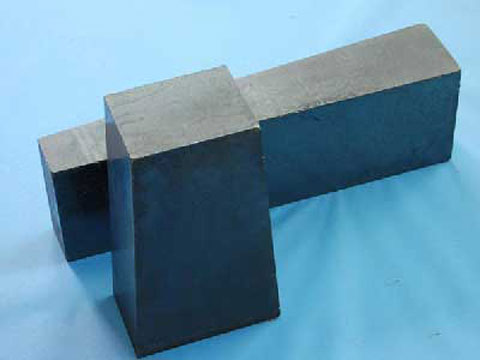
Applications of Magnesia Carbon Bricks
Magnesia carbon bricks are made from magnesia, dead-burned magnesia, fused magnesia, high-purity magnesia, high-quality graphite, and bauxite additives. The performance of magnesia carbon bricks is closely related to the graphite content. As the graphite content increases, the brick’s strength decreases, its thermal expansion rate decreases, and its residual expansion rate increases.
Refractory MgO-C bricks are ideally suited to the requirements of steelmaking. They offer high refractory properties, high corrosion resistance, excellent heat resistance, high-temperature spalling stability, and high thermal shock resistance, leading to rapid adoption. Leveraging the carbon material’s poor wettability by slag and molten steel, and the high refractory properties, slag resistance, solubility, and low high-temperature creep of magnesia, MgO-C (magnesia carbon) bricks are used in areas with severe corrosion, such as slag lines, product lines, and steel nozzles. The widespread use of magnesia carbon bricks in steelmaking and improvements in steelmaking processes have created significant economic benefits.
The graphite content in bricks should be controlled at around 20%. Magnesia carbon bricks have low wettability with slag and are therefore suitable for the ladle slag line, particularly in applications involving continuous casting from multiple furnaces. To meet the needs of producing clean steel, the application of magnesia carbon bricks in the ladle refining process has expanded from the slag line to the sidewalls.
In the ladle, the slag has a complex and variable chemical composition, and the temperature fluctuates dramatically and frequently. High-performance magnesia carbon bricks are often used in the ladle slag line.
Electric furnace magnesia carbon bricks are primarily used for the lining and taphole of medium-frequency electric furnace steelmaking oxidation converters, hot spots in high-power electric furnace walls, the lining of external refining furnaces, and the slag line of the ladle.

